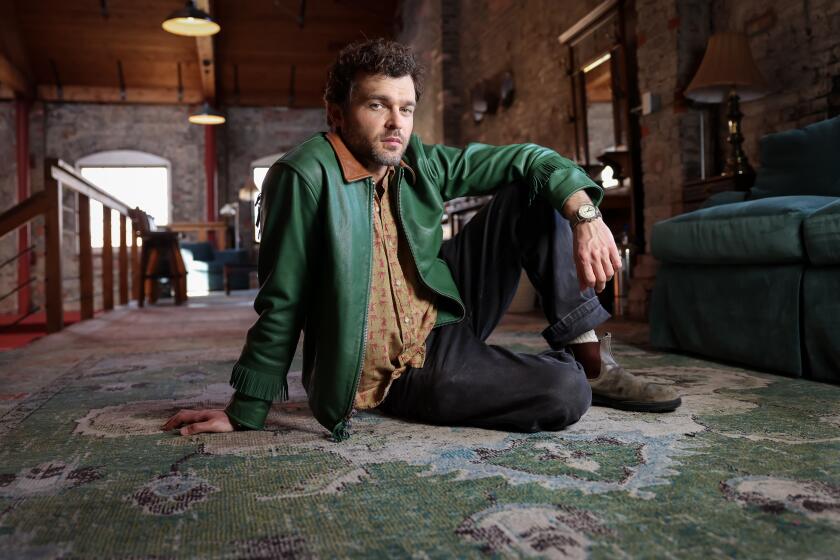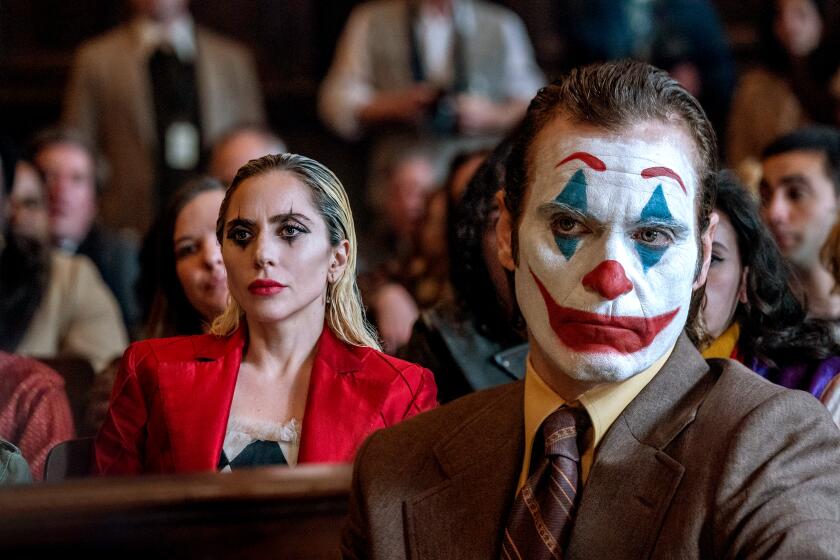ART REVIEW : Rembrandt in a New Context
- Share via
Works of art sometimes take as long to make as novels or symphonies and yield their depths only after protracted and repeated contemplation. All the more reason then to appreciate the Los Angeles County Museum of Art’s mini-exhibition program, “Masterpiece in Focus.”
The idea is to showcase one of the museum’s treasures, surrounding it with other, closely related works that encourage viewers to look comparatively in the hope they’ll get a better idea of what makes art tick.
For the record:
12:00 a.m. Oct. 19, 1991 For the Record
Los Angeles Times Saturday October 19, 1991 Home Edition Calendar Part F Page 11 Column 1 Entertainment Desk 1 inches; 19 words Type of Material: Correction
Incorrect identification-- Lazarus of Bethany was not the brother of Mary Magdalene, as stated in an article in Friday’s Calendar.
The latest focus subject is the museum’s “The Raising of Lazarus,” painted by Rembrandt van Rijn about 1630. It’s a dramatic early foray into biblical subject matter by the 17th-Century Dutch artist many still believe to have been the greatest painter of all time. Nobody claims this is among his premier works but it is a profound and seminal one. The artist regarded it so highly he kept it until late in life when he was forced to sell his possessions in an early version of Chapter 11. (Curiously enough Lazarus’ story is recounted in Chapter 11 of the Book of John.)
Rembrandt’s bankruptcy clearance also included a version of the same subject by his friend and rival, Jan Lievens. They shared a studio in Leiden and often used the same models. One identical male figure shows up in both their versions of the Lazarus theme, now reunited in LACMA’s galleries after long separation. The Lievens is on loan from the Royal Pavilion Art Gallery and Museum in Brighton.
The story of Lazarus recounts the most astonishing miracle ascribed to Jesus before his own resurrection, which it prefigures. Lazarus of Bethany was the brother of Mary Magdalene and Martha. He fell ill. The sisters sent for Jesus to cure him. By the time he arrived the brother had been dead four days. Jesus approached the tomb and intoned, “Lazarus, come forth!”
Artists of Rembrandt’s era were attracted to the subject. It was painted by everyone from Tintoretto to Rubens. A series of prints of versions by other artists hang on flanking walls. They show talented people confounded by the problem of how to dramatize an event that happened in a tomb. Most of them fall into the trap of placing the figures too low in the composition. Not Rembrandt.
His mise en scene is theatrically dark and spacious. He places Jesus standing well above the tomb. His raised hand forms the apex of a triangle. It radiates along an invisible line that joins the head of Lazarus, whose body seems to rock forward as if levitated by Jesus’ gesture. The spotlighted face of Mary Magdalene expresses awe and dawning joy at the miracle; not so those of Jesus and Lazarus. Jesus looks physically strained and anxious. Lazarus is somnolently agonized.
It’s a characterization that almost certainly reflects the Calvinist belief that death is a blessing that releases the soul from a life of sin. John Donne, the great English poet and Anglican minister, said Jesus wept at Lazarus’ resurrection because through it he was “re-imprisoned, re-committed, re-submitted to the manifold incommodities of the world.”
That Rembrandt, still in his mid-20s, was already able to both successfully stage the scene as theater and also build such nuances of meaning into it is something of a miracle in itself. No less so is the artist’s deftness in capturing eloquent expression in the virtually miniature detail of the small heads.
LACMA’s picture has been recently cleaned and has a modestly handsome new frame. Poor old Jan Lievens is not so lucky. His painting’s black-and-gold frame is too ornate. Somewhere in the past, several inches of canvas were lopped off the top of it. It is dirty and unrestorably fragile.
Scholars believe Lievens painted his version after Rembrandt’s. The two compositions are alike in broad outline. On its face, it appears Lievens tried to outdramatize his friend. His figures are smaller in relation to the format. Lazarus’ shroud rises spookily--and quite irrationally--from the bottom of the tomb toward figures grouped at the right. All we see of Lazarus himself are his hands reaching weirdly up from the coffin. It’s a nice touch but it doesn’t work except as an accidental prediction of surrealism.
On its own, the Lievens is a solid and original vision of the theme. It’s hardly an insult to note that it doesn’t quite come up to the mark of conceptual and psychological density set by one of art’s preeminent geniuses.
The series is a superior idea, both educational and diverting. This chapter was organized by assistant curator of European painting and sculpture Richard Rand who also wrote the keen monograph which has an essay on Rembrandt’s materials and techniques by senior paintings conservator, Joseph Fronek.
Los Angeles County Museum of Art, 5905 Wilshire Blvd. , to Jan. 12; closed Mondays, (213) 857-6000 .
More to Read
The biggest entertainment stories
Get our big stories about Hollywood, film, television, music, arts, culture and more right in your inbox as soon as they publish.
You may occasionally receive promotional content from the Los Angeles Times.










